A real pleasure on the eye.
Somebody might recognize this plant in our garden, as we cannot find it in our succulent book. But it is beautiful.

Look deep into nature, and then you will understand everything better. Albert Einstein.
All of the plants that you see in here, were planted when they were still very small.
I cannot bend down so well anymore, so my wife is the boss of the gardens :)
Only joking as the females would love this, but not joking about the bending down issue. We plan and get the succulents and the cactuses together, normally from the budget racks at the nurseries and when we see something rare, then we simply get it.
The front garden strips still have young plants, but they are going to eventually grow to full size and then it will be great to see.
Let me show you the progress thus far.
We had no idea what this would be, as when it was small, it looked like some wild lettuce kind of plant. There is another flower stem growing at the right-hand side of the plant.
So now it's sprouting two flower stems, and you can see how beautiful the bigger left hand stem flowers are.
Now let's have a look at the two garden strips of our front garden.
I had a spectator when I took the photos, and she must have been worried that I will remove her food stash.
This is the right-hand garden strip under our study window.
planted out with many kinds of aloes and succulents. We always try to keep our gardens similar to the surrounding nature in the area.
And here below, you can see the view that we have from the study window. Just behind the wooden border pole, you can also see the squirrel's food stash. Sundried granadillas and oak tree acorns.
This is the left-hand garden strip where we keep the big stuff, like the Christ Thorn aloe and the Jacob's Ladder bush.
There is a big secret in this section that I will show you in another post. It was really an amazing discovery.
So, they say that life should be as a garden. Plants growing side by side and all of them happily rising to greet the morning sun. Somebody else, had this to say about nature,* In order to see birds, it is necessary to become a part of the silence*.
I agree totally with this, as I live it every time when I go out into nature. Silent, patient, and meditative.
We rush through life in a hurry every day, searching for the things that will create our future survival. What we don't understand about this, is that the rushing around eventually affects our health. And without health we will have nothing.
Such is life.
I hope you have enjoyed the pictures and the story.
Photos by Zac Smith-All Rights reserved.
Camera: Canon PowershotSX70HS Bridge camera.
Thank you kindly for supporting this post.
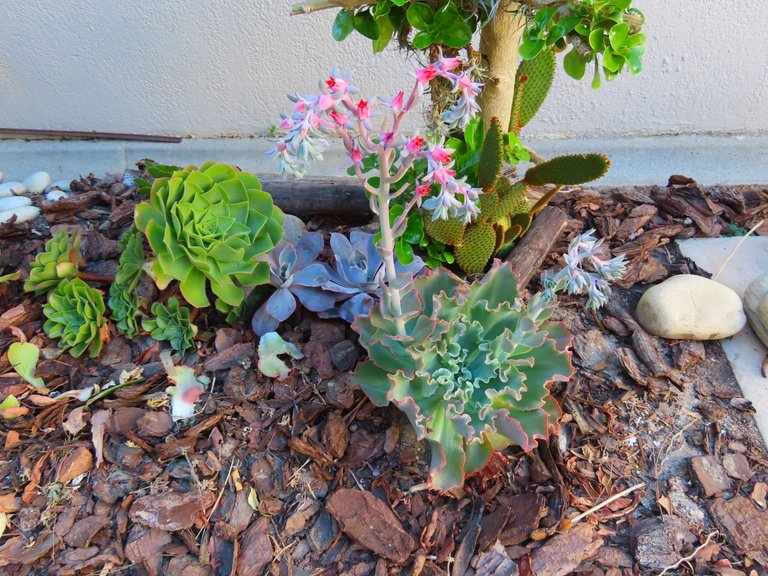
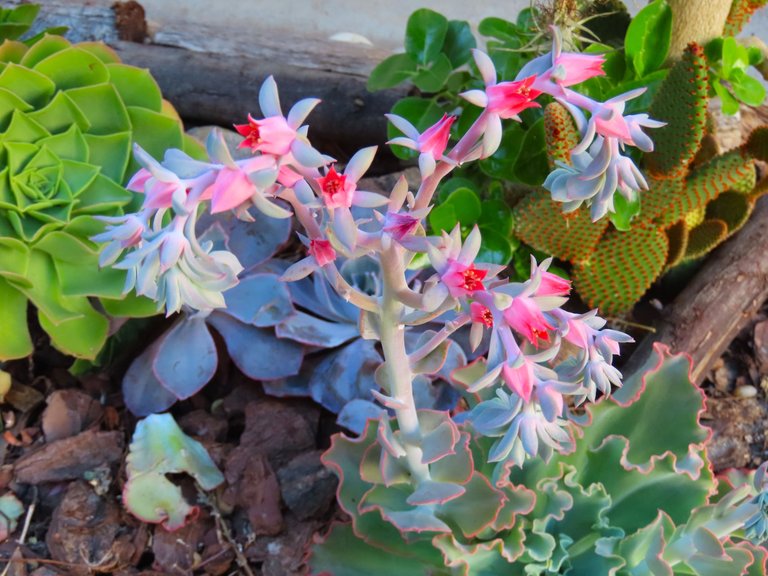
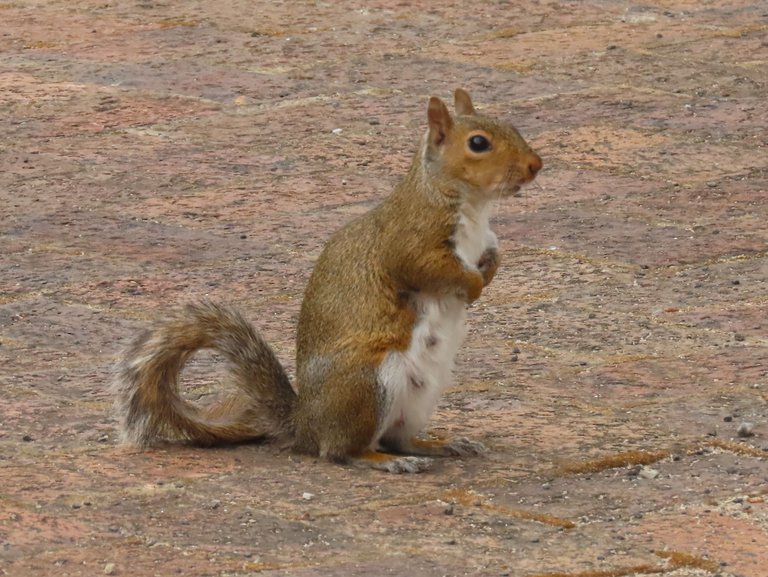
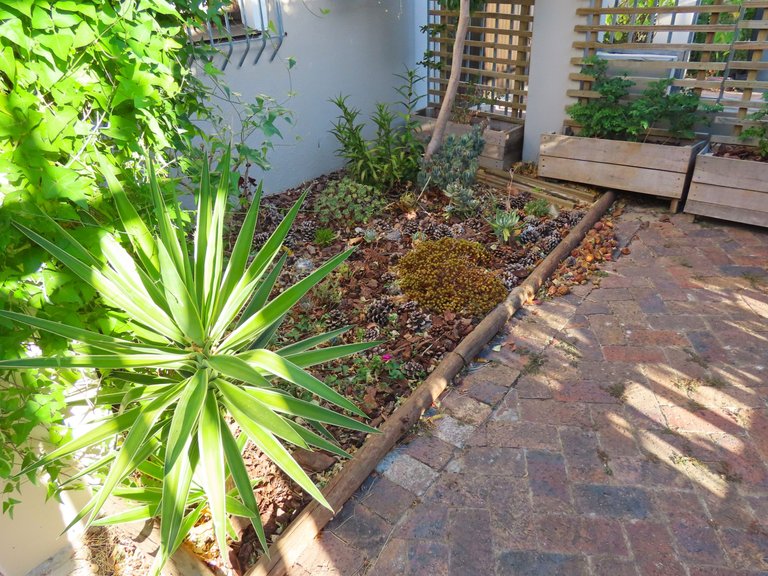
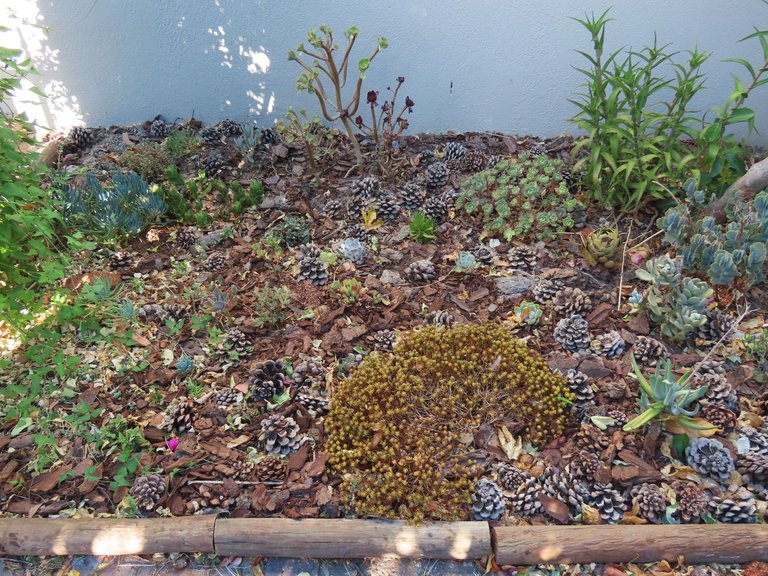

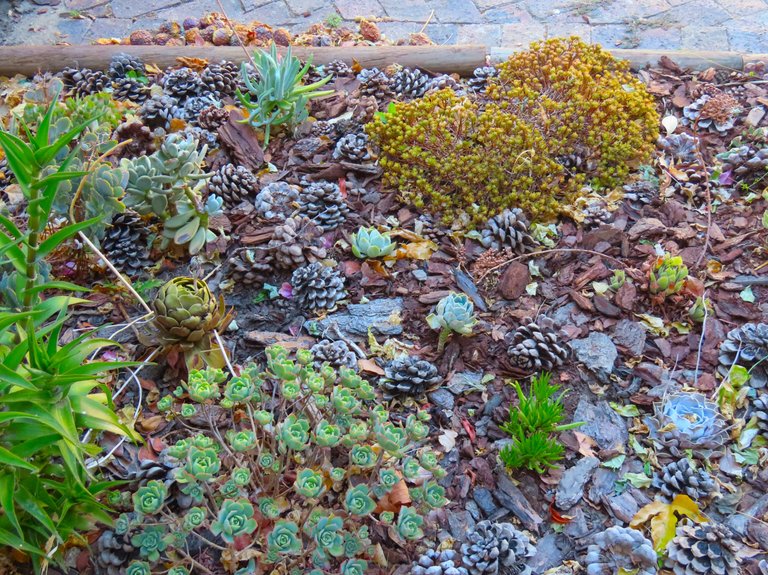
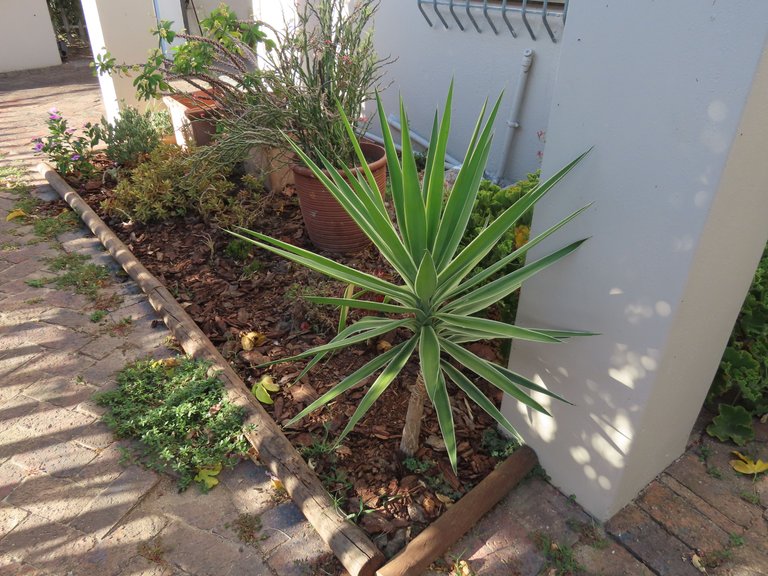
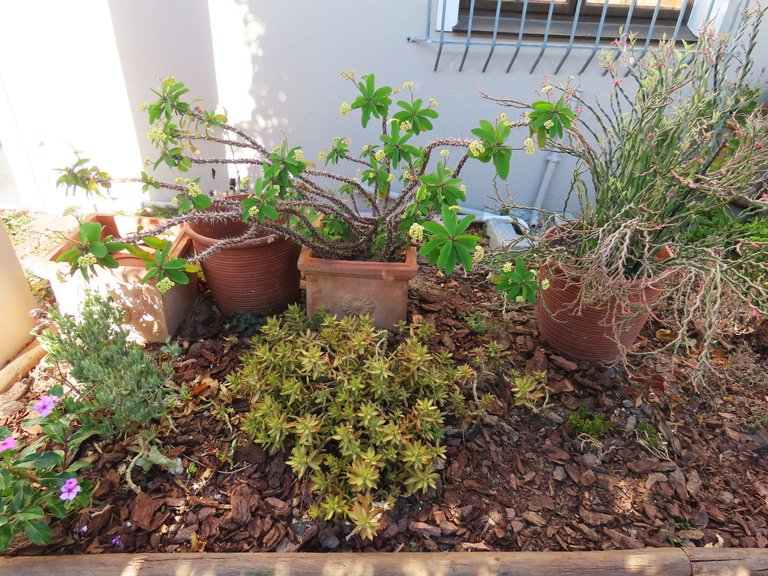
Appears you have the Echeveria runyonii ‘Topsy Turvy’ here, part of the Echeveria or Crassulaceae family. I have the Echeveria runyonii Rose, Echeveria 'Blue Sky and many similar plants, they appear to be mainly indigenous in Central America, Mexico and northwestern South America.
We do have local succulents in Africa plants of the Old World, mostly from southern Africa, Tropical Africa, Madagascar and Canary Islands, more along the line of Aloe.
Your garden is spectacular, enjoy watching them grow, flowers bringing joy without much water required, nor attention except removing the odd offensive weeds.
!LUV
!PIZZA
papilloncharity, joanstewart sent you LUV. 🙂 (4/10) tools | trade | connect | daily
Made with LUV by crrdlx.
Nah, not a Topsy Turvy, as we also looked at it, but its leaves are too thick. It might be one of the Echeveria plants, but we will continue the search.
Thank you for the link and the explanation Lady Joan.
!PIZZA an !LUV
joanstewart, papilloncharity sent you LUV. 🙂 (1/10) tools | trade | connect | daily
Made with LUV by crrdlx.
Fatness of leaves may be indication of more/less water in growing conditions, although I have most probably a dozen varieties in Echeveria plants not always easy to tell from a photo.
!LOLZ ID parade....
lolztoken.com
Because they stay out of treble.
Credit: reddit
@papilloncharity, I sent you an $LOLZ on behalf of joanstewart
(1/8)
Delegate Hive Tokens to Farm $LOLZ and earn 110% Rewards. Learn more.
Found it and it is an Echeveria "Ruffles" Lady Joan. There is also an Echeveria "Blue curls" that looks the same. !LOLZ
lolztoken.com
He had no chance against all 5 of us.
Credit: reddit
@joanstewart, I sent you an $LOLZ on behalf of papilloncharity
(3/10)
Delegate Hive Tokens to Farm $LOLZ and earn 110% Rewards. Learn more.
With curly leaves in two tone, stems of flowers (mine are orange), there are so many varieties out there some more common. Seeing in pink really a treat, always learning something new!
!LUV
papilloncharity, joanstewart sent you LUV. 🙂 (2/10) tools | trade | connect | daily
Made with LUV by crrdlx.
I think that orange should also be very nice.
We do indeed learn something new every day :))
!LUV
joanstewart, papilloncharity sent you LUV. 🙂 (1/10) tools | trade | connect | daily
Made with LUV by crrdlx.
Between cactus and succulents so many varieties that thrive over here, forever learning something in/from nature. !LOLZ
lolztoken.com
Every judge knows bananas splits.
Credit: reddit
@papilloncharity, I sent you an $LOLZ on behalf of joanstewart
(1/8)
ENTER @WIN.HIVE'S DAILY DRAW AND WIN HIVE!
Indeed and that's why I always say that nature is a great teacher. It holds many surprises. !LOLZ
lolztoken.com
It didn't stop ringing.
Credit: reddit
@joanstewart, I sent you an $LOLZ on behalf of papilloncharity
(3/10)
NEW: Join LOLZ's Daily Earn and Burn Contest and win $LOLZ
Nature teaches every day, who listens?
Those with eyes to see and ears to hear !LOL
lolztoken.com
They spend all day checking people out.
Credit: reddit
@joanstewart, I sent you an $LOLZ on behalf of papilloncharity
(5/10)
Delegate Hive Tokens to Farm $LOLZ and earn 110% Rewards. Learn more.
$PIZZA slices delivered:
joanstewart tipped papilloncharity
@papilloncharity(1/15) tipped @joanstewart
What a delicate flower!
Thank you and glad that you liked the flower.
Sar, your photography is very beautiful. Seeing your work, I am interested in work, stay happy.
Thank you for your appreciation of my work and may you also stay happy.
It's an Echeveria hybrid cultivar, probably one of the many permutations of "Ruffles"
Thank you, and we will have a look at the "Ruffles" family.